Orchids have soft and sluggish leaves: causes and treatment
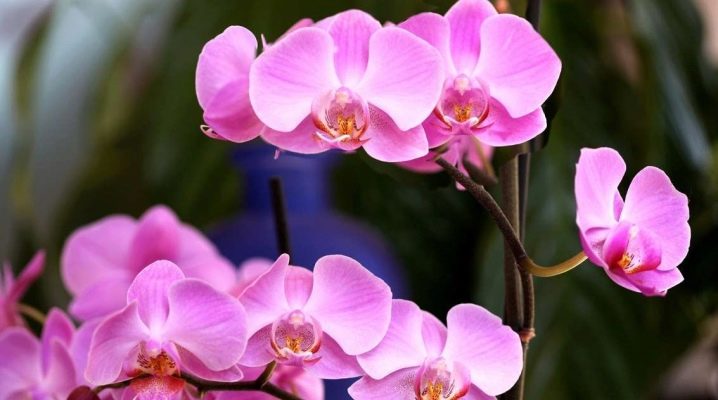
Growing orchids takes patience and attention. Even a minimal change in the usual conditions can cause a deterioration in the condition of the flower. Signs of ill health are a general lifeless appearance, sluggish faded leaves, a decrease in turgor, a slowdown or acceleration of growth.
What is leaf turgor?
Turgor is called the state of the leaf in which it has a healthy appearance, rich color, high density, good elasticity. By the state of health of the leaves, you can determine how healthy the flower is. Signs of a healthy leaf:
- density;
- the presence of wax plaque on the sheet plate;
- upright position;
- natural elasticity.
Thus, it is the leaves that help determine the state of the plant in the first place. If the color of the leaf plate gradually changes, the leaves become soft, wrinkled, they dry out or have already wilted, then this indicates the presence of errors in the cultivation of the culture. The lower leaves soften first. When the ground part lacks nutrients, and the roots do not have time to provide the plant with these elements, they are redistributed due to the lower leaves.
The upper sheets absorb the entire supply of food from the lower ones. It happens that a plant completely sheds a leaf, regardless of its location or age. There may be several reasons for the deterioration of the condition.
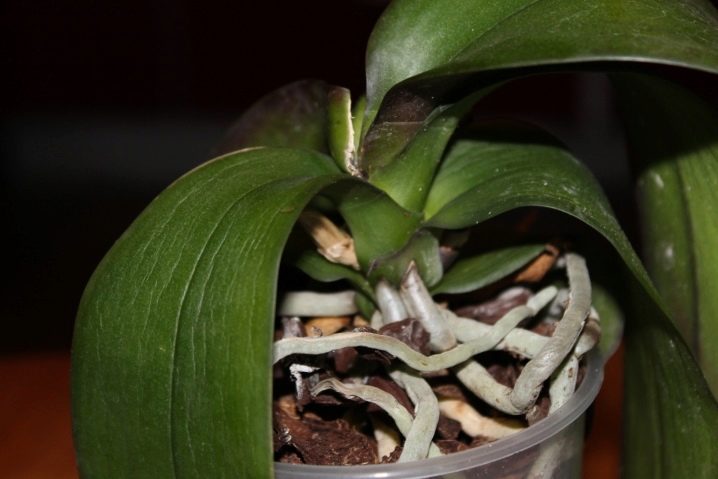
Causes
Let's take a look at the most common causes of soft and sluggish leaves in orchids.
Overheat
Despite the fact that this is a rather thermophilic crop, overheating threatens the emergence of serious problems with the health of the plant. In this regard, you cannot leave a flower near a battery or on a heated windowsill. Under open ultraviolet rays, the soil heats up, the remaining moisture evaporates, the roots get overcooled and lose their ability to absorb nutrients.
And also in direct sunlight there is a risk of burns on the leaves, from this the color of the leaf plate changes. It is better to put the flower in a shaded place or provide diffused sunlight with the help of special devices.
Overheating can be judged by the state of the leaf - it is wrinkled, became soft, moisture is released from it.
For a comfortable life, the plant needs temperatures up to +28 degrees in summer and at least +15 degrees in winter. It is important to maintain the daily temperature difference within 5-7 degrees. Correctly selected temperature will provide not only good turgor of the leaves, but also abundant flowering.
If the window sill is very hot by the battery and the sun, and there is nowhere else to put the flower, then you can use the advice to correct the situation. Place the pot in another container that is completely sealed. Make drainage holes in the inner pot. Place pebbles or expanded clay on the bottom of a wider container.
Excess liquid will linger on the pebbles, moisturizing the roots during evaporation. This will prevent the soil from overheating.
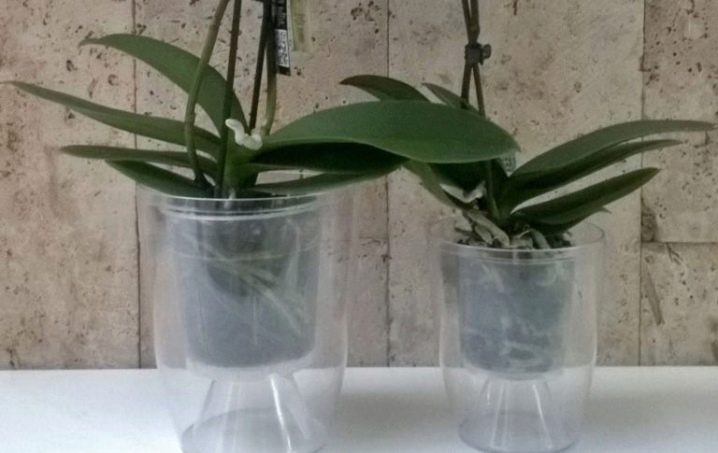
Frostbite
Leaf lethargy can often be detected in winter. This is due to the opposite cause - frostbite. As already noted, temperatures should not be allowed below +15 degrees. Foliage quickly loses its turgor during a cold snap., the plant may die.
Pests
Quite a common factor due to which the leaves begin to lose their elasticity and change color. Attacking a flower, insects damage the roots, the culture stops growing.If dark tubercles are seen on the leaf plate, then the cause of the disease is scabbards... These insects love to feast on the juice of orchid leaves. Under the influence of this parasite, the leaf gradually withers.
Another petty leaf juice lover – whitefly. And also the enemies of the orchid should be attributed mealbug... Under its influence, the leaves quickly begin to fade. You can distinguish the parasite by the white lumps on the leaves. Another pest - spider mite - dangerous in that it is able to move from the orchid to other indoor flowers. It can be recognized by the white bloom on the foliage.
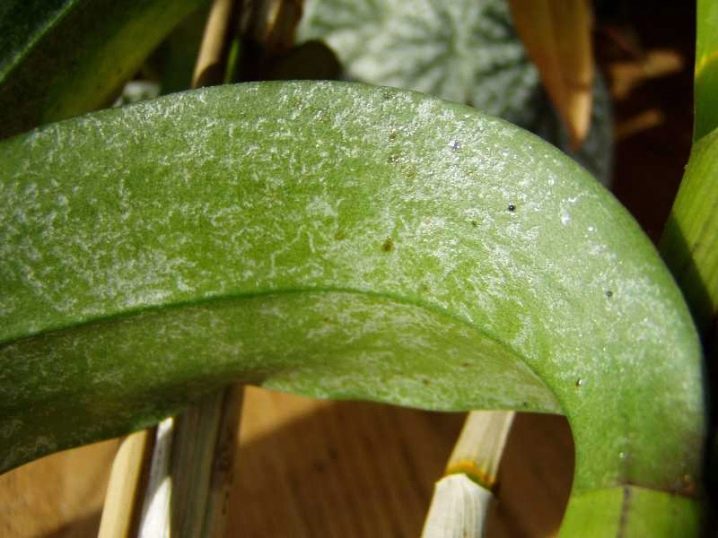
Lack of moisture
Due to the lack of moisture, the soil becomes overdried, which can again affect the turgor of the leaves. The microclimate in the room changes regularly and it is often impossible to keep track of this, and therefore the required amount of water is not provided.
Overdried soil can be judged by the resistance of the plant. If the stem is moved and it hardly moves, then the soil is too dry. It is important that the ground is always loose.
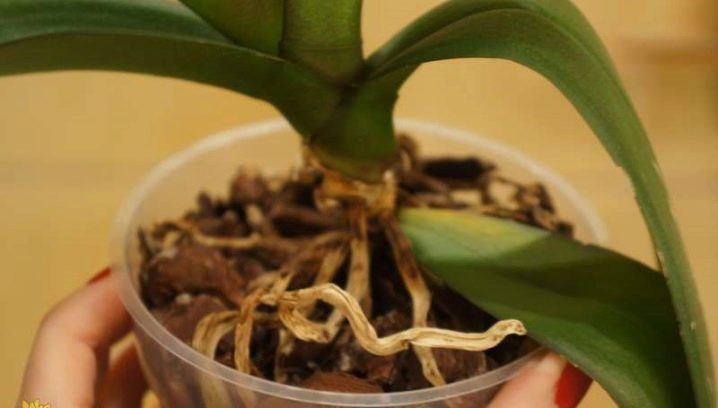
Root problems
The reverse process can also lead to problems with leaves - overflow... From excess moisture, the roots begin to rot. This nuisance is also dangerous because it is not immediately noticeable. The plant may even start blooming with a diseased root system. Gradually, the roots become so exhausted that they are no longer able to nourish the flower, the leaves begin to suffer from this again: they turn yellow, wrinkle and wither.
What to do?
You can restore health to a plant in different ways. It all depends on the cause of what happened. Overheating the flower is placed for several days in a shaded place, it is not worth watering or spraying it, as this can provoke tissue death.
Water balance this culture is restored in 3-4 days. After that, the plant is placed in an illuminated area, but not near heat sources. Do not forget about the need for diffused light.
If the reason for the lethargy of the leaves is a lack of moisture, and the soil is too dry, then the flower needs shower procedures. To do this, place the pot with the crop in warm water for an hour, and then spray a little.
When “bathing” a flower, some growers recommend adding succinic acid to the water. Wipe the leaves gently with a dry cloth. Then increase the watering frequency.
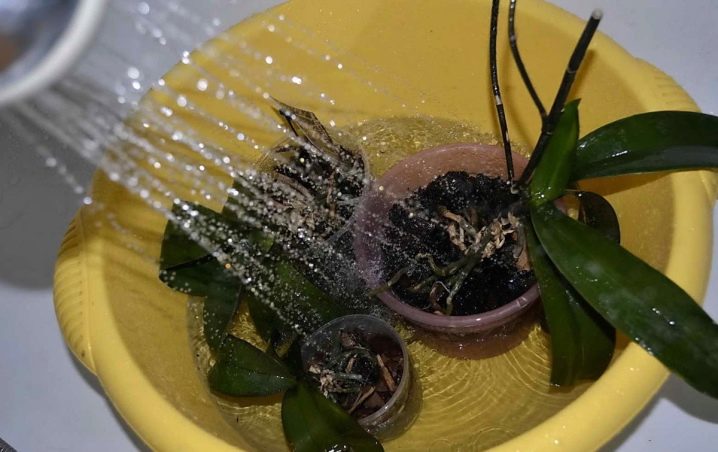
If root problems have caused the leaves to be weak, carefully remove the plant from the pot and assess the condition of the roots. The damaged roots look rotting, brown, covered with mucus, if you press on such a root, moisture will be released from it. Healthy roots have a light greenish color, there is no plaque and yellowness on them, they are dense and elastic.
To rectify the situation remove injured partsand rinse the rest with warm water. Treat healthy parts with dried cinnamon or crushed activated charcoal and transplant the orchid into fresh soil.
If the reason for the wilting of the leaves is overflow, then it is enough just to dry the roots and transplant the culture into a looser substrate. Don't be afraid to remove damaged roots. The orchid is a pretty viable flower, even with only 5 cm of healthy root, the plant can be restored.
Any insect pests are destroyed by using insecticides... In addition, for example, the shields can be removed mechanically.
If the plant is attacked by worms, then first the entire infection is cleaned off the leaves, and then they are treated with a solution of laundry soap or disinfectants.
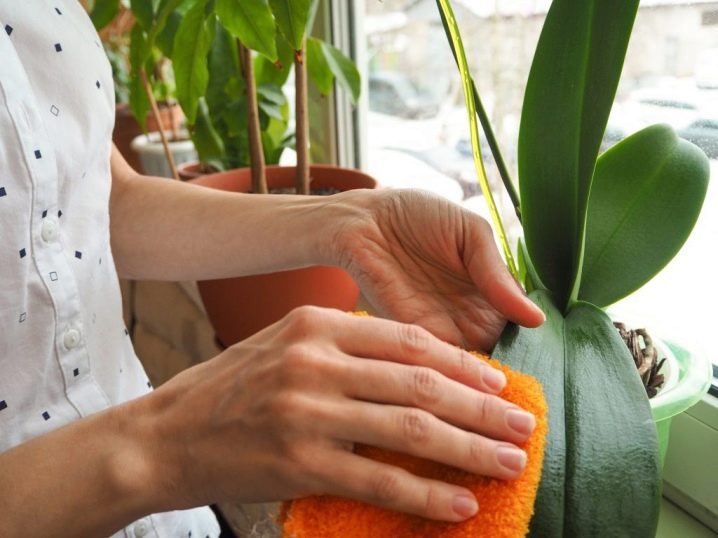
Advice
Listen to a few additional recommendations of experienced florists.
- When choosing a top dressing, it is better to opt for industrial preparations., they are more effective compared to folk remedies. However, try to deviate slightly from the instructions when preparing the fertilizer and prepare the solution in smaller proportions than indicated on the package.This trick will not allow you to overfeed the flower, but at the same time provide it with the necessary nutrients. An increased concentration of potassium, phosphorus and other salts can lead to decay or dryness of the roots, which immediately affects the state of the leaves - they soften and turn yellow.
- An important rule of thumb is not to fertilize the plants during treatment. If the condition of the leaves of the culture has deteriorated, then it is necessary to eliminate the cause. At the time of resuscitation, the flower is weakened, during transplantation it does not immediately adapt to the new soil, in such a weakened state, the roots are not able to absorb useful substances from top dressing.
- The lethargy and softness of the leaves can be caused by stress. For example, this often happens when a plant moves from a store to a new home. This is influenced by the microclimate, humidity, lighting. Having provided good care and a gradual transition to new conditions, the florist can soon enjoy full bloom.
- Do not buy an orchid if it has all the buds in bloom. In this case, it is not known how long the plant has already bloomed in the store and it is impossible to determine its condition by the appearance of flowers. It is recommended to take specimens with several blossoming flowers so that the flowering lasts longer and there is an idea of its duration.
- It is important to follow the spraying rules. The flowers themselves cannot be sprayed; only the leaves need to be moistened from a distance of 20 cm and only in the warm months of the year. In winter, this procedure will lead to frostbite. In the immediate vicinity of the spray bottle, very large drops will fall on the leaves, which the leaf will not be able to absorb. If you hold the device at a distance of 20 cm, then only water dust will be sprayed onto the leaves, which they absorb well.
- It also happens that the leaves wilted due to lack of space in the pot. White or yellow spots appear on them, there is too much foliage, there is no flowering for more than three months. In this case, the flower needs to be transplanted into a larger container and fresh soil. The best time to transplant is spring and early summer.
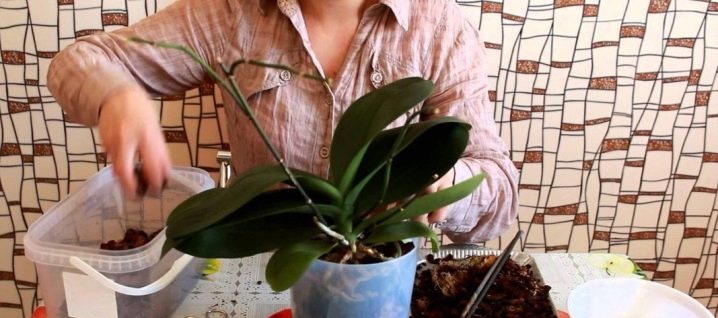































The comment was sent successfully.